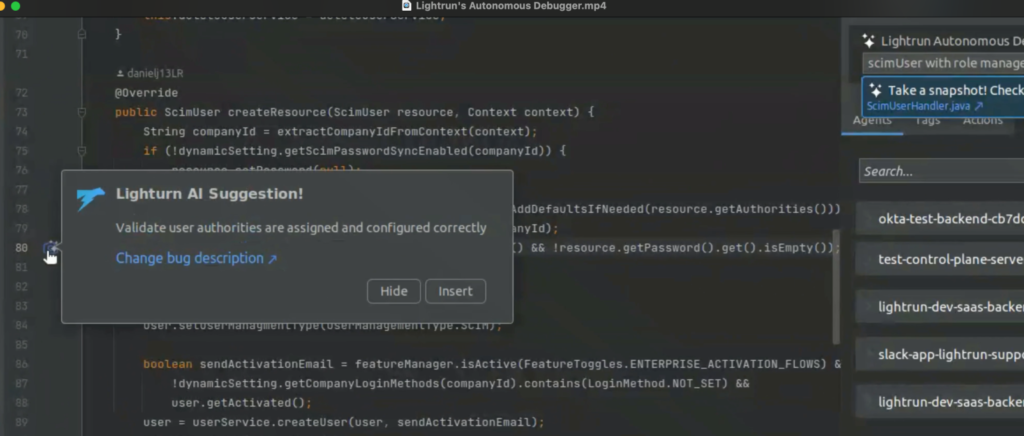Lightrun, a Tel Aviv-based startup dedicated to enhancing developers’ ability to debug production code directly from their IDE, has made a groundbreaking announcement. On Wednesday, the company introduced its first AI-powered tool: the Runtime Autonomous AI Debugger. Currently in private beta, this innovative tool promises to resolve production code issues within minutes, drastically reducing the time developers spend on debugging.
In tandem with this launch, Lightrun revealed an $18 million SAFE round raised last year, led by GTM Capital with participation from existing investors Insight Partners and Glilot Capital. This latest funding boosts Lightrun’s total funding to an impressive $45 million. The company has also disclosed plans to initiate a Series B round next year.

Accelerating Mean Time to Recovery
“Until now, we have managed to reduce Mean Time to Recovery (MTTR) to about 30 to 45 minutes on average, based on our measurements and customer feedback,” said Ilan Peleg, Lightrun’s CEO and co-founder. “With the new Runtime Autonomous AI Debugger, we aim to automate the entire process—from ticket creation to pinpointing the exact line of code responsible for an issue.”
Peleg also hinted at future plans to leverage generative AI to automatically fix bugs. Although this capability is not yet available, the rapid advancements in AI technology suggest it may soon be feasible.
Harnessing the Power of AI for Debugging
Lightrun’s approach involves fine-tuning existing AI models to specialize in debugging. This is possible because the company can draw insights not only from the code but also from the entire monitoring and observability stack. Future plans include integrating this system with other enterprise tools such as ticketing systems. “There’s an abundance of data in the enterprise landscape related to troubleshooting and debugging that is often overlooked by Copilot-like solutions,” Peleg explained. Unlike many chat interfaces that solely focus on code, Lightrun’s solution will incorporate broader contextual data to present more accurate solutions.
Iterative Development and Cost Management
Peleg highlighted that the development of the Runtime Autonomous AI Debugger involved multiple iterations to ensure its readiness for daily use. Approximately six months ago, Lightrun began experimenting with existing AI models to identify areas where generative AI could benefit users. However, the initial solutions were prohibitively expensive to offer as a product. “Now we have optimized our system so that it doesn’t significantly increase costs, which is why we’re ready to make this announcement,” Peleg stated. “Previously, I wasn’t comfortable announcing something that wasn’t fully realized.”
Focus on User Value Over Monetization
For now, these generative AI features will be incorporated into the existing Lightrun solution for users participating in the private beta. Peleg emphasized that the company’s current priority is to demonstrate the system’s value to users rather than to focus on short-term monetization.
Looking Ahead
Lightrun’s launch of the Runtime Autonomous AI Debugger marks a significant step forward in the realm of debugging. By integrating advanced AI capabilities with extensive enterprise data, Lightrun is poised to transform the way developers troubleshoot and resolve production code issues, paving the way for more efficient and effective development processes.
Stay tuned as Lightrun continues to push the boundaries of what’s possible in the world of software debugging, setting new standards for speed, accuracy, and automation.










